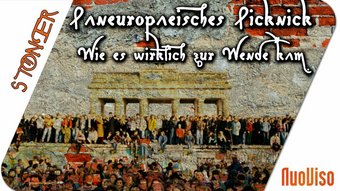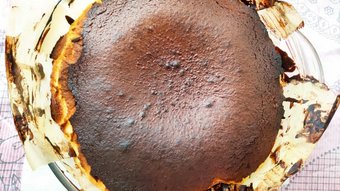The Primeval Code
6
About :
Can the global food problem at last be solved – without using genetic engineering? In his new book the "Primeval Code" (Munich 2007) Swiss journalist Luc Bürgin unveils the secret of a sensational biological discovery at the pharmaceutical giant Ciba (now Novartis), which unfortunately has been ignored by the experts up to the present day. In laboratory experiments the researchers there Dr. Guido Ebner and Heinz Schürch exposed cereal seeds and fish eggs to an "electrostatic field" – in other words, to a high voltage field, in which no current flows.
Unexpectedly primeval organisms grew out of these seeds and eggs: a fern that no botanist was able to identify; primeval corn with up to twelve ears per stalk; wheat that was ready to be harvested in just four to six weeks. And giant trout, extinct in Europe for 130 years, with so-called salmon hooks. It was as if these organisms accessed their own genetic memories on command in the electric field, a phenomenon, which the English biochemist, Rupert Sheldrake, for instance believes is possible.
The Swiss pharmaceutical group patented the process – and then stopped the research in 1992. Why? Because "primeval cereals" generated by an electric field, in contrast to modern strains of seeds, require hardly any fertilisers or pesticides – i.e. crop protection agents, sold as priority products by Ciba at that time. The discovery was soon forgotten, without the global scientific community taking any notice.
In collaboration with the researchers involved – or rather their sons, in this book, the author has for the first time now disclosed in detail how the principle of this revolutionary bio-experiment works. Previously unpublished research reports, 64 exclusive photos, English-language patent specifications and interviews document the "Primeval Code" in all its aspects.
Nevertheless many scientists who think along conventional lines may remain sceptical about this inexplicable biological effect. But now for the first time, renowned German expert botanists such as Professor Edgar Wagner of the University of Freiburg and Professor Gunter Rothe from the University of Mainz make positive statements about it in the book. Rothe even had replicated the Ciba experiments in detail at his university in 2001 – and was successful. And also for the first time, even a Nobel laureate – the world-famous Swiss microbiologist Werner Arber – is taking up the cudgels for this controversial discovery. Back then, Arber had given an expert opinion on the Ciba experiments in person in the laboratory. The professor said to the author: "I was impressed!"
Indeed, Guido Ebner and Heinz Schürch appear to have discovered a biological method of effectively creating antecedents from progeny – without using genetic engineering. Or as both researchers put it: "Our experiments do not involve a mutation of the organism in question, which in the case of genetic engineering involves channelling an additional gene into the organism. No entirely new organism is created. In the electrostatic field, only the gene expression is altered – the retrieval of the existing gene. That is something different."
In addition to corn and trout experiments, the results of experiments with wheat were also amazing: thus the cereal exposed to the electrostatic field developed new proteins, which people looked for in the original wheat to no avail. Furthermore, it surprisingly produced much larger roots than the control group. This had the advantage of allowing the crops to grow far more rapidly. And occasionally in these experiments, a variant emerged which resembled the genetic antecedents of the wheat. Thus, a meadow grass-like arrangement of ear shoots and small narrow leaves was observed, for example.
"In the case of our 'manipulated' wheat, growth was so rapid that it was ripe in four weeks instead of the usual seven months", Heinz Schürch recalled. "However one has to say that although the ears and stalks were somewhat smaller, there were more ears per plant. The actual benefit is that we could cultivate this wheat in regions where spring and summer are short – where conventional wheat cannot be grown at all." In this case, one can also cheerfully refrain from using pesticides and herbicides: "The pests that have adapted to the growth process of normal wheat have not yet developed when we harvest our wheat as early as four to eight weeks after planting."
The Third World in particular could benefit from this method of cultivation that is both environmentally friendly and inexpensive. For "primeval cereals" from an electric field yield more than modern genetically engineered varieties and do not require fertilisers. Furthermore, it is completely natural and thus healthier. It can be grown by anybody at minimal cost.
After Guido Ebner and Heinz Schürch both passed away unexpectedly in 2001, their experiments were continued by Guido Ebner's son, Daniel – himself a biologist – on a private basis.
Tags :
Their limit for today is $0!























Comments:
Reply:
To comment on this video please connect a HIVE account to your profile: Connect HIVE Account